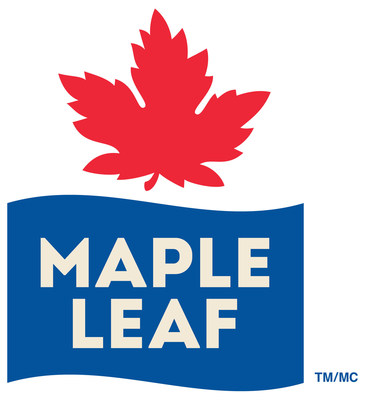
Maple Leaf Foods, U.S.A.?
By Sylvain Charlebois
Meat &Poultry Food Manufacturing industry Maple Leaf Maple Leaf Foods Inc. (CNW Group/Maple Leaf Foods Inc.)
Maple Leaf Foods Inc. (CNW Group/Maple Leaf Foods Inc.) By: Sylvain Charlebois
Maple Leaf Foods, the largest pork processor in the country, has opted to build its new meatless plant south of the border. In a recent announcement, the iconic Canadian food company announced plans to spend US$310 million on building a 230,000 sq. ft. processing plant in Indiana where its Lightlife Burger will be made, along with other products. It will become the largest facility of its kind in North America. The company is clearly capitalizing on the expanding plant-based market and is hedging against several disruptive factors. The fact that the new plant will be built in the U.S. comes as a huge disappointment nonetheless.
Maple Leaf has many reasons to look beyond meat products to build its business. For one, biosecurity issues are lurking all over the world, starting with the African Swine flu, which is raking havoc in Asia. Canada is one case away from seeing borders closed to many countries around the world. The livestock industry is in a very fragile state, something the beef sector knows too much about it considering what happened during the mad cow crisis 15 years ago.
Secondly, the demand for pork and other processed meat products has remained robust despite the overpowering rhetoric we have heard in recent months about the world succumbing to veganism. However, the rise of flexitarianism is real and companies like Maple Leaf have invested in vegetable proteins, despite their heritage and past commitments towards traditional protein sources. In order to focus more on plant-based dieting for a few years, Maple Leaf has acquired two U.S.-based companies. Building a new facility is a natural extension of an ongoing strategy that will help Maple Leaf pivot between major protein sources. Such a rationale certainly has merit.
But Maple Leaf is building its plant in the U.S., not in Canada, despite the fact that peas will be the plant’s main ingredient. Canada is one of the world’s largest pea producers. This speaks to how anemic our food processing industry has become. The food processing landscape in Canada is desperate for measures that will enhance its competitiveness. Countless federally-licensed facilities are in need of some serious capital investments. Visits to some of these plants seem like a sort of time-travel as some technologies are decades old. It has been mentioned that Canada is now having more difficulty attracting foreign investors due to less-than-predictable new policies affecting the business environment. And it’s not all about more taxes and regulations. It’s more about providing a stable, sustainable focus on factors that enable economic growth and talent management in this country. On these fronts, the U.S. has outwitted Canada for a few years now.
According to a report by Food and Consumer Products of Canada (FCPC), a group representing food manufacturers, 83 per cent of new, branded products launched in Canada were neither developed nor manufactured in Canada. This lack of innovation is deeply rooted in our inability to think creatively and generate intellectual property for this critical sector within the agri-food sector.
Growing challenges linked to labour, costs, and skill management are more than apparent, and the situation is getting worse. According to the same survey by FCPC, the number of full-time employees has declined by 7.3 per cent over the last five years, due to labour relocation and outsourcing of certain operations outside of Canada. During this period, there have been 22,000 jobs lost within the sector, and all these positions are in food manufacturing. Essentially, the sector has lost 12 jobs a day, every single day, for five years. The state of our infrastructure to move food products around is also highly deficient, compared to the U.S..
So, Maple Leaf is building a plant in Indiana simply because it makes perfect business sense. Or, to put it more bluntly, the company did not have much of a choice. Unless some market fundamentals change, Canada has no case for harbouring more new processing plants. In the last decade, the U.S. has seen almost 4,000 brand-new food processing plants, whereas Canada has seen a mere 20. Something is clearly wrong. We have an abundance of ingredients and are on the leading edge of artificial intelligence that can make our manufacturing more efficient and productive. But it doesn’t compensate for our unskilled labour force, capital access deficiencies and poor infrastructure conditions.
The Federal government’s agri-food export targets of $85 billion by 2025 can only be reached by making our food-processing sector more competitive. Canada needed the nearly 500 jobs created by the build of this new Maple Leaf facility, but it was decided otherwise and Maple Leaf itself is hardly to blame.
Print this page